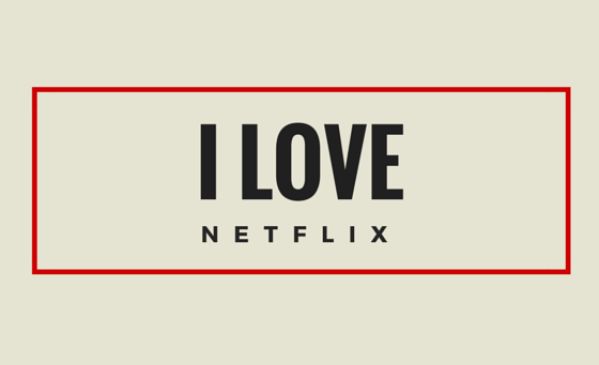The ‘emotional’ revolution that has engulfed the marketing world is undeniable: brands are constantly seeking to win our wallets by way of our hearts. The mythmakers of Madison Avenue did so by crafting poignant brand stories that masked products’ imperfections or downright uselessness. Though today’s marketers are forced to meet a slightly higher standard of credibility, their goal is still to teach us how their brand is supposed to make us feel. It seems it’s not enough for soap to clean and moisturize – it must also compel us to philosophize about what it means to be beautiful.
Psychology, and more recently, Cognitive Neuroscience, have elucidated the critical role emotion plays in our day-to-day existence. We have entire brain regions dedicated to expressing, perceiving, and processing emotions, and so it is no surprise that emotions lie at the core of many of our decisions and behaviors. But marketers have, for the most part, misinterpreted the implications of our biology for their brand-building activities.
The most successful companies in the world understand that brand and business growth don’t result from the kind of emotion that is manufactured in an advertisement. Instead, these companies channel all of their energy into creating magnificent products that add true, tangible value to people’s lives. Emotion – and the financial commitment it inspires – actually emerges as an organic side-effect of satisfied functional needs.
Dyson, for example, (pictured) takes pride in the fact that it has no marketing department. Indeed, its products are the only marketing department the company needs. James Dyson dedicated his life to perfecting what was always an imperfect technology, and in the process created the most innovative, powerful, and beautiful vacuum cleaner on the market. The team behind Dyson’s Luddite sibling, the Swiffer, did something similar: they understood the misery of mopping and invented a simple and effective tool to mitigate the pain. And Apple, fed up with man’s subservience to overcomplicated technology, introduced people to the most elegant and intuitive devices upon which they’ve ever laid a finger.
These brands have achieved extraordinary success by fulfilling a fundamental functional need – be it cleanliness or communication – in a unique and innovative way. When Dyson, Swiffer, and Apple communicate with people, they allow their products and technologies to speak for themselves (many of their ads simply consist of product glamour shots) and inspire consumers to forge their own emotional connection with the brand. Millions of people would be devastated if these brands left the planet – not because they intentionally tug at our heartstrings, but because they add meaningful value to our lives.
Contrast these examples with Google’s recent ads for its Chrome browser. The ads are beautiful and chill-inducing, but their purpose is ultimately unclear. As Google continues to lag behind Microsoft and Mozilla in terms of browser usage share, it becomes increasingly important for them to give people a reason to switch to Chrome. This recent campaign has generated millions of YouTube views (and even more tears), but has done little to convince anyone besides current Chrome users that it’s an application worth trying. Had Google found a way to, say, bring Flash to my iPhone, I’d also be crying tears of joy, but this time on my own terms.
The functional/emotional divide is also evident when it comes to issues of sustainability and social responsibility. A brand like Seventh Generation, built entirely on an emotional promise of protecting the planet, has lost many customers who feel that the brand doesn’t actually fulfill its functional duty: keeping things clean. And while Pepsi’s Refresh project revolutionized how we use social media and proved to the world that brands are capable of doing good, the fact that Coke now holds the top two spots in the Cola Wars suggests it’s the other refreshment – the functional kind – for which people actually pine.
So has the emotional revolution really been replaced by a functional one? Not exactly. For one, it is emotion that ultimately drives the functional innovation that I have described here: the passion and empathy of people like James Dyson, Steve Jobs, and their disciples allow them to conceive of and execute the value-adding innovations that draw people in. And once they’re drawn in, it is emotion that keeps them there: a brand that has functionally integrated itself into someone’s life creates an enduring emotional bond that is difficult to break. But notice that it is function that lies at the core of this system. Until companies realize that it is through superior performance and meaningful, empathetic innovation that brands become beloved and irreplaceable icons, the only emotion they can hope for is of the artificial, transient variety. And any human-brand relationship built on this kind of emotion cannot expect to function for very long.
The Blake Project Can Help: The Emotional Connection Workshop
Branding Strategy Insider is a service of The Blake Project: A strategic brand consultancy specializing in Brand Research, Brand Strategy, Brand Grwoth and Brand Education





5 comments
Jason Lim
May 31, 2011 at 3:53 am
Good post. What many people forget is that your brand should be different in a meaningful, relevant way. There are many brands out there that are different, or claim to be different, just for its own sake. The real reason a brand becomes different is to make a customer happy, and we can’t expect artificial happiness to last long.
Tito Avalos
May 31, 2011 at 7:40 am
Completely agree! I enthusiastically agree more than ever! No brand works without substance, and by this I mean a great product. Unfortunately the same guys that thought that marketing was about telling the consumer what they wanted to hear, are the same kind of ones that think that you can build a brand without a product that solves a real problem.
Your post is quite refreshing!!!
Ernst
June 2, 2011 at 11:37 pm
Interesting article. I agree with many of the comments. But if I understand correctly that the main argument of the article is; “Emotion – and the financial commitment it inspires – actually emerges as an organic side-effect of satisfied functional needs” then I would have to respectfully disagree.
If one uses the dictionary definition of functional as: “having or serving a utilitarian purpose; capable of serving the purpose for which it was designed” then I would have to argue the opposite and I would use the same examples you provided.
If the specs of a Dyson vs. Kenmore, Apple vs. Dell are the same (whether its vacuuming power or processing speed), the reason one buys the Dyson or Apple at a premium price is for the way the brand/product makes them feel. Emotion isn’t an organic side effect of function — rather, it’s built into the product/brand from the get-go.
EMOTION is what sets these brands apart from the common, bland, emotionally numbing sea of products that, albeit, might be equally functional.
fahim
June 3, 2011 at 1:07 am
Emotional value is for communication and to create the position over the top of mind of the TG! Functional value is a must.
But when the competition is overloaded and everyone is claiming the same ( red ocean), its the emotional value ( in communication) which keeps the same brand close with the audience!
Thomson Dawson
June 3, 2011 at 3:34 pm
Let’s not forget the critical role design plays in this equation.
Design is where you bake in the entire benefit hierarchy–from physical attributes to the highest expressive self relational benefits people associate with a brand.
Nothing can be left out.
Today everything is good… good enough. Function by itself does not differentiate one product from another… any more than design for its own sake will insure brand engagement. Function is an ante…the price of admission.
Your point is well taken and logical. But what a product is, what it does, what it does for me, why I care, and what I really want must all be components of a designed experience. The trick is to design consciously not accidentally. To do this well requires empathy.
Comments are closed.